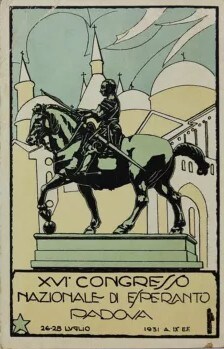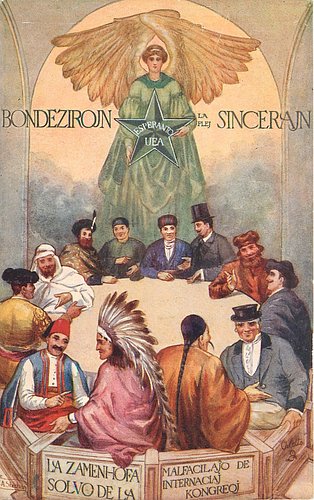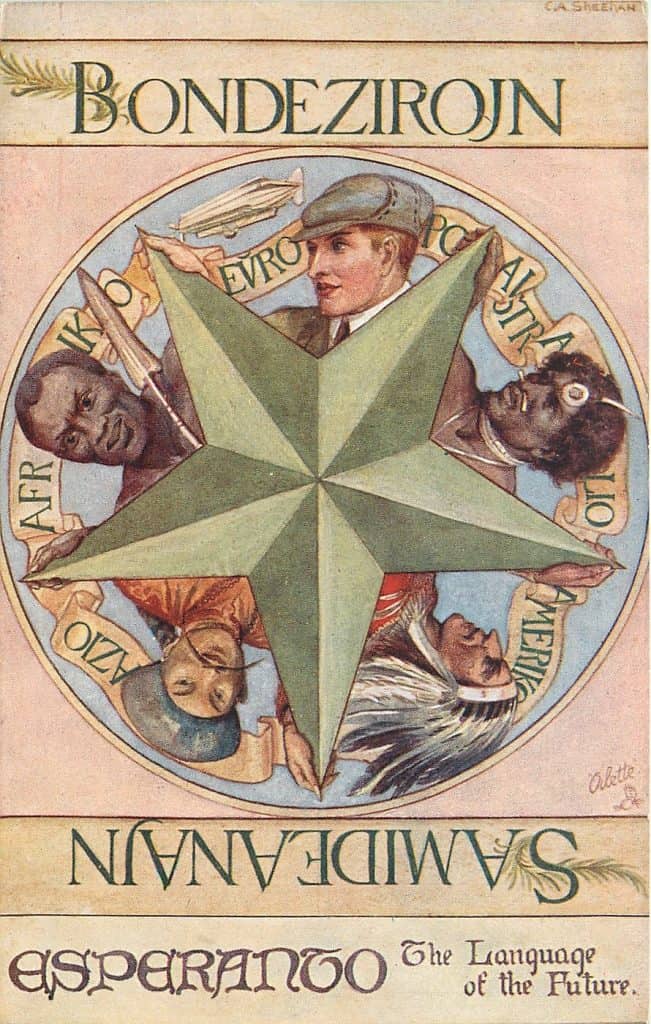https://postcardhistory.net/2025/04/esperanto-explained/
Postcard History
A magazine for the postcard collector
No Comments
Esperanto is a fabricated language that fosters global communication and cultural understanding. Since it is a neutral language, it reduces language barriers and facilitates collaboration. Its ease of learning empowers individuals seeking access to education and information worldwide. Postcards on Esperanto are scarce.
April 24, 2025
Esperanto, explained!
Published on
Esperanto is an international secondary language created in the late nineteenth century. It is based on the goal of fostering communication between speakers of different native languages.
Its history begins with Ludwik Lejzer Zamenhof, a Polish ophthalmologist, who developed Esperanto in 1887. Zamenhof’s motivation stemmed from the experience of growing up in Belostok (Białystok), Poland. Belostok was a multicultural city where linguistic and cultural divisions often led to misunderstandings and conflicts. He believed that a common, easy-to-learn language could promote peace and understanding among the diverse communities of his hometown.
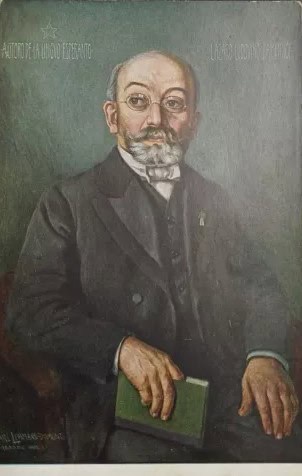
Zamenhof published the first book detailing Esperanto under the pseudonym “Doktoro Esperanto” (meaning “Doctor Hope”). The book, titled “Unua Libro,” presented the grammar, vocabulary, and the phonetic alphabet of this new language. Esperanto quickly gained traction, and a new Esperanto-speaking community began to emerge.
Throughout the early decades, Esperanto flourished. Various organizations and groups contributed to its spread, with several newspapers, magazines, and books published in Esperanto. The movement gained support from notable figures, including writers, linguists, and activists who viewed it as a means to foster international understanding and cooperation.
Events like the Universal Esperanto Congresses began to draw attendees from diverse backgrounds, demonstrating the language’s appeal as a bridge between cultures.
[In 1905 the language had its first international congress in France, which certified its status as a global linguistic venture. Through the decades there have been 110 such congresses held in cities on five continents. The only hiatuses came during the two world wars. Of the 110 events only three have been held in the United States: the 1910 Congress was in Washington, D.C., the 1915 event was held in San Francisco, and the last such meeting was in Portland, Oregon in 1972.]
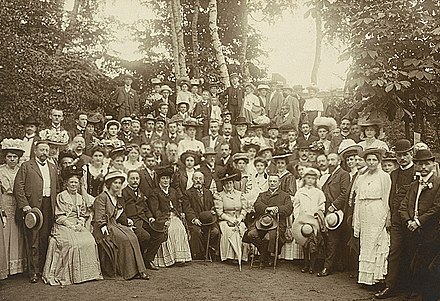
(Look closely, front row, center left;
Mr. Zamenhof was present.)
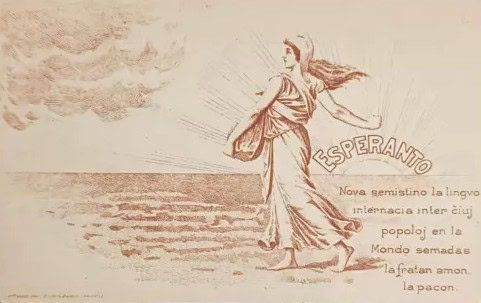
Postcards like the one above began to appear as early as 1911(?). The cancel is smeared; the only discernible part is the last digits of the date, but the location clearly reads Warszawa. The card was address to Wien (Vienna), Austria.
By mid-1922 Tuck entered the world of Esperanto when the company commissioned Charles A. Sheeham to prepare a series of posters that encouraged the learning and use of the language in international business affairs and diplomatic communications.
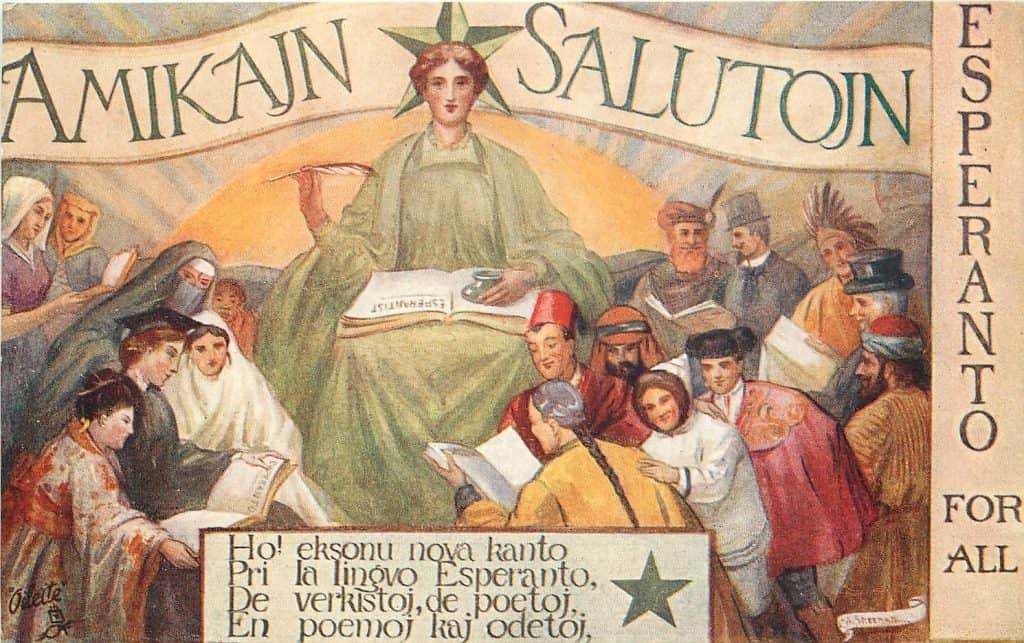
However, the journey of Esperanto was fraught with challenges. The political climate of the early twentieth century hindered its growth. World War I and World War II brought about uncertainty laced with high degrees of nationalistic emotion, and a focus on national languages. Notably, during the Nazi regime, Esperanto speakers faced persecution, leading to significant losses in its community. This period severely stunted the growth of Esperanto and brandished it with an association of danger and subversion.
After World War II, Esperanto enjoyed a resurgence, particularly at the grassroots level, as individuals and small groups continued to promote the language. Yet, despite these efforts, Esperanto never achieved the widespread use that Zamenhof envisioned. Key factors were:
- English was making its way to becoming a global lingua franca. The advent of the internet further cemented the position of English as the dominant language for international communication in business, science, and culture. Many people found it more practical to learn English rather than a constructed language.
- Secondly, the perception of Esperanto as a “constructed” language may have hindered its acceptance. For many people, the notion of a language built from the ground up lacks the cultural and historical richness associated with natural languages. While Esperanto does have simple and regular grammar designs for ease of learning, it often struggles to compete with the deep emotional and cultural ties people have with their native tongues.
- And even though there was a robust community of Esperantists, the number of active speakers remained relatively small and there was little interest among the public to join the Esperanto community. This limited the opportunities for immersive experiences and interactions that are crucial for language development. Plainly, the demographic of Esperanto speakers, often artsy or intellectual, certainly limited its appeal to mainstream populations.
The message, translated to English reads,
Joyfully the hope caresses us because the future goal becomes apparent,
that the International language progresses, finding friends everywhere.

The scholarship that prevails in the twenty-first century seems to show a slight revival of interest in Esperanto. The new growth has been aided by the internet and social media. Language learning apps and online communities have allowed a new generation of enthusiasts to engage with Esperanto in innovative and peculiar ways. Today, there are an estimated two million speakers of Esperanto worldwide.
Postcard History is a free online magazine dedicated to vintage and historic picture postcards and the many stories associated with them. We feature richly illustrated articles designed to both inform and entertain postcard collectors and history buffs. We also provide the most comprehensive listing of forthcoming shows around. And there’s a rich trove of links to institutional and personal online postcard collections. There’s also a comprehensive, verified listing of active postcard clubs in the U. S. and Canada, which we’re working on expanding worldwide.
|
Esperanto is a fabricated language made to foster global communication and cultural understanding. As a neutral language it reduces barriers and facilitates collaboration and its ease of learning empowers individuals seeking access to education. Postcards on Esperanto are scarce. |
|

